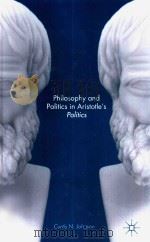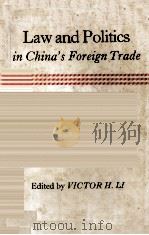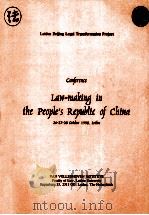《JUSTICE AND POLITICS IN PEOPLE'S CHINA:LEGAL ORDER OF CONTINUING REUOLUTION?》
| 作者 | JAMES P.BRADY 编者 |
|---|---|
| 出版 | ACADEMIC PRESS |
| 参考页数 | 268 |
| 出版时间 | 1982(求助前请核对) 目录预览 |
| ISBN号 | 0121247503 — 求助条款 |
| PDF编号 | 813703048(仅供预览,未存储实际文件) |
| 求助格式 | 扫描PDF(若分多册发行,每次仅能受理1册) |
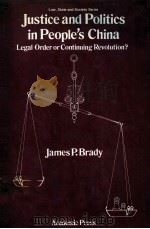
Part One. Historical Background and Current Issues in the Development of Chinese Justice and Society1
1. Problems of Understanding Socialist Legality: Dialectic Themes in Chinese Development and the Trial of the Gang of Four3
The Waiting Obligation of Radical Criminology3
Misunderstanding China: Five Generations of Scholarly Inquiry5
Method and Perspective11
Unifying Themes: the Dialectics of China's Two Judicial Traditions and Contradictions in State, Community and Economy12
Thought Reform, the Confucian Heritage and Rectification21
The Trial of the Gang of Four—Echoes of a Political-Legal Contest24
Note30
2. The Imperial Tradition and its Collapse31
China's Two Governments and Changing Class Relations31
Confucian Thought and the Relativity of Law34
Imperial Justice: the Benign Brutality of Confucian Order35
Private Justice in the Shadow of Imperial Neglect37
Social Consequences of Western Invasion and Over-population39
3. The Era of the Chinese Republic (1911-49)41
The End of the Empire and the Evolution of Private Government41
Republican Justice: Reform and Repression amid Civil War47
The 1922 Coup and Chinese Fascism52
Part Two. The Dialectical Path of Justice in the People's Republic of China55
4. Popular Revolution and the Creation of People's fustice57
Communist Strategy before Mao57
Mass Line, Elite Line and Revolutionary Politics59
From Private Government to Mass Mobilization62
Land Reform: Mass Action and Social Justice65
Civil War Justice and Crimes among the People67
The Beginnings of Law and Bureaucracy69
5. Liberation: Class Struggle and Reconstruction74
Mass Organizations, Mass Campaigns74
Post-War Land Reform: a Conflict of Lines and Classes (1949-51)80
Suppression of Counter-revolutionaries (First Campaign 1949-52)83
The"Five Antis" Campaign (1951-52)94
Street Crime and Liberation Justice99
The "Three Antis" Campaign (1951-52)101
Judicial Reform (1952-53)106
6. The Constitutional Movement and the Drive to Professionalism113
The Political Economy of Industrialization113
The 1954 Constitution and the Structure of Professional Justice119
The Regulation and Control of Popular Justice124
The Uneasy Calm and the Eighth Party Congress130
Rectification and the Sound of One Hundred Flowers136
7. The Great Leap Forward and Back145
The Anti-Rightist Movement145
Handling Contradictions through Continuous Revolution: Strategy of the Great Leap150
Big City Chauvinism and the Rural Communes153
The Urban Communes and the Struggle with Materialism157
Professional Justice under the Great Leap158
The Revival of Popular Justice165
The First Failures and the Maoist Reaction169
Continuing Crises and the New Conservatism173
8. Cultural Revolution and the Limits of Populism180
Socialist Education and the Renewal of Popular Politics181
Cultural Revolution: the Seizure of Power192
Factional Conflicts, Royalist Resistance and Intervention by the Army203
Reform and Recovery in Government, Justice and Mass Organizations210
The Looming Problem of Succession: Political Antagonists on the Eve of Mao Tse-tung's Death220
9. Judicial Policy and Political Contest in Post-Mao China: Recapitulations and Conclusions222
Chinese Conflicts and Western Sympathies224
The Two Line Struggle as History and Ideology225
Political Contest and Judicial Policy231
Attack from the Right and the New Legal Order as a Political Weapon235
Revisionist Economics, International Capital and the Role of Law240
Legitimizing the New State and the Promise of "Individual Rights"242
Reflections on the Role of Law and Implications for China's Future244
References248
List of Abbreviations cited in the Text248
Chinese and Western Reference Sources250
Subject Index264
1982《JUSTICE AND POLITICS IN PEOPLE'S CHINA:LEGAL ORDER OF CONTINUING REUOLUTION?》由于是年代较久的资料都绝版了,几乎不可能购买到实物。如果大家为了学习确实需要,可向博主求助其电子版PDF文件(由JAMES P.BRADY 1982 ACADEMIC PRESS 出版的版本) 。对合法合规的求助,我会当即受理并将下载地址发送给你。
高度相关资料
-

- Year book of public health in the People's Republic of China.
- 1994 The People's Medical Publishing House
-
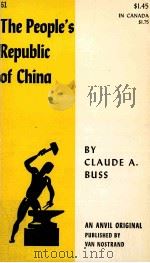
- THE PEOPLE'S REPUBLIC OF CHINA
- 1962 VAN NOSTRAND
-
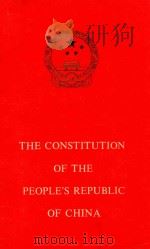
- THE CONSTITUTION OF THE PEOPLE'S REPUBILC OF CHINA
- 1978 FOREIGN LANGUAGE PRESS
-

- LYMPH NODE METASTASES
- 1955 OXFORD UNIVERSITY PRESS
-

- THE GOVERNMENT AND POLITICS OF THE PEOPLE'S REPUBLIC OF CHINA 3RD EDITION
- 1981 NEW YORK UNIVERSITY PRESS
-

- INTERNATIONAL BUSINESS AGREEMENTS IN THE PEOPLE'S REPUBLIC OF CHINA READINGS AND MATERIALS
- 1997 KLUWER LAW INTERNATIONAL
-

- ATLAS OF CANCER MORTALITY IN THE PEOPLE'S REPUBLIC OF CHINA
- 1979 CHINA MAP PRESS
-
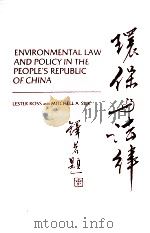
- Environmental law and policy in the People's Republic of China
- 1987 Quorum Books
-
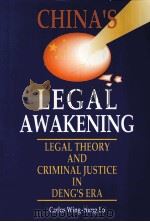
- CHINA'S LEGAL AWAKENING LEGAL THEORY AND CRIMINAL JUSTICE IN DENG'S ERA
- 1995 HONG KONG UNIVERSIY PRESS
-
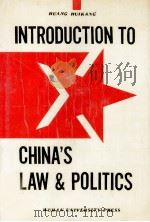
- Introduction to China's law and politics
- 1990 Wuhan University Press
-

- Year book of health in the People's Republic of China
- 1997 北京:人民卫生出版社
提示:百度云已更名为百度网盘(百度盘),天翼云盘、微盘下载地址……暂未提供。➥ PDF文字可复制化或转WORD
